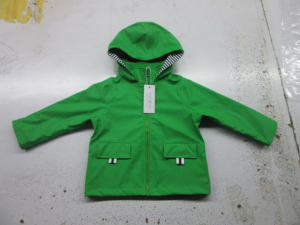
Some common factors for raincoat quality control:
Appearance
Quantity check
Measurement(weight & size)
Sample comparison
Waterproof test
Colour fastness test
Seam strength test
Odor test
Zipper test
Barcode scan
3M tape test for Logo
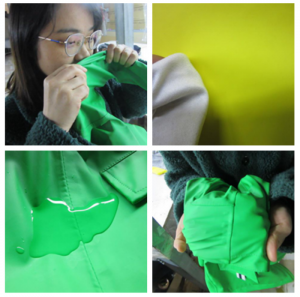

Some common factors for raincoat quality control:
Appearance
Quantity check
Measurement(weight & size)
Sample comparison
Waterproof test
Colour fastness test
Seam strength test
Odor test
Zipper test
Barcode scan
3M tape test for Logo

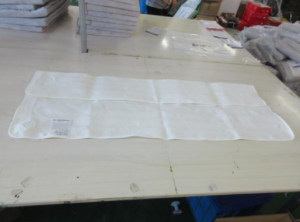
Some common factors for electric blanket quality control:
Appearance
Quantity check
Measurement(weight & size)
Basic function check
Logo printing alcohol resistance test
Stitches test
Sewing strength test
Loading test
Smell test
Humidity test
GSM of fabric test
Internal electronic component cheeck
Power cord tension test
Power test
High voltage test
Leakage current test
Accelerate life test
Temperature rise test
Barcode scan
Drop test
3M tape test for Logo
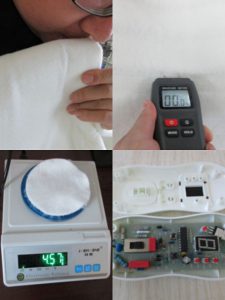
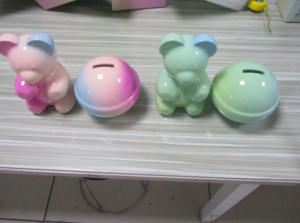
Some common factors for household product quality control:
Appearance
Quantity check
Measurement(weight & size)
Basic function check
Barcode scan
3M tape test for Logo
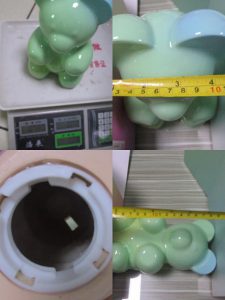
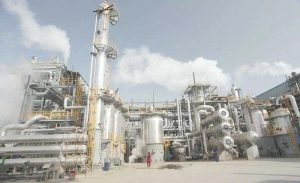
China’s daily coal output has continued to increase, hitting a new high in recent years, and coal storage in power plants has been improved to close to the level of the same period last year. At present, the coal market supply and demand situation improved significantly, power supply and demand situation is generally stable.
With the rapid recovery of the global economy, the demand for energy rebound rapidly, but the supply of energy for a variety of reasons and difficult to keep up. This year is marked by a double La Nina. Normally, there is a 60 percent chance of a cold winter, but when there is a double La Nina, the chances of a cold winter are much higher and extreme weather is more frequent. Coal, oil and natural gas have always been known as the “three fires” in winter, and this year is unusually cold winter, coal demand may be more vigorous, superimposed heating load increased, power plant daily consumption picked up. With limited supply growth, coal supply and demand will remain tightly balanced during the winter, supporting the market for the second half of the winter, from December to early January.
In terms of demand, October is the traditional off-season, with seasonal decline in demand and passive hoarding of power plants. Enter November, heating season arrival, peak season demand can be expected. In addition, hydropower enters the dry season in winter, and hydropower loss is partially supplemented by thermal power. It is expected that thermal coal demand will still be higher than the seasonal period. Although in the off-season of coal use, the work of increasing production and ensuring supply has been vigorously promoted, the coal supply for electric power continues to remain high, and the inventory of power plants has been improved. However, we should also be aware that, excluding coal in transit, coal storage in most power plants along the coastal and river has not reached a high level. Taking power plants in Jiangsu province as an example, according to the current daily consumption level, power plants can save coal for up to 10.6 days, which is in a safe position. However, in the event of extreme cold, when daily consumption soars, the number of days available for coal storage falls below 10 days. Another example is a power plant in Zhejiang province, which normally consumes 130,000-150,000 tons per day, but this summer and last winter, daily consumption jumped to 200,000 tons. Once power plants’ daily consumption spikes again this winter, the number of days available to store coal will fall sharply.
In the last two months of this year, China’s macro economy is expected to maintain a steady recovery, with industrial enterprises producing at full capacity and sprinting toward the target for the year. All regions and departments have strengthened cross-cyclical adjustment, worked hard to keep the economy operating within a proper range, and kept the economy stable and sound. In winter, hydropower, wind power and photovoltaic power generation output will also be limited, and the replacement role of renewable energy for coal will be weakened. It is expected that China’s energy demand and electricity generation and consumption will maintain rapid growth, which will form a support for coal demand, thermal coal demand will be relatively strong.
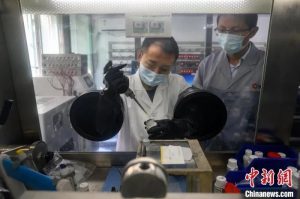
Shanxi gives full play to its resource endowment and energy advantage, and promotes the scale effect of carbon-based new materials industry through the joint efforts of government, industry, learning, research and application.
“Shanxi has the cost and cluster advantages of coal resources, and promoting the transformation of coal from ‘energy’ to ‘material’ is an inevitable foothold and important support for the development of Shanxi’s new material industry.” Chen Chengmeng, a researcher at shanxi Institute of Coal Chemistry and deputy director of the Key Laboratory of carbon materials at the Chinese Academy of Sciences, said.
Shanxi is rich in coal, how to play the advantage of resource endowment, Shanxi has been exploring breakthroughs.
It is clear in the plan of 14 Strategic Emerging Industries in the 14th Five-year Plan of Shanxi Province that in the aspect of carbon-based new materials industry, key technologies such as graphene, supercapacitor carbon and third-generation carbon fiber will be made breakthroughs, leading domestic research and development base of carbon-based new materials industry will be built, and the coal industry will be promoted to high-tech and high value-added transformation and development.
From raw materials to new materials, Shanxi coal industry transformation jumps out of its “energy” value, aiming at the goal of “by 2025, the revenue of carbon based new materials industry will reach 50 billion yuan”.
Graphene, the king of new materials, can be made from coal, capacitor carbon, lithium anode, and carbon fiber. In 2012, the Shanxi Institute of Coal Chemistry, Chinese Academy of Sciences set up a research group to carry out research and development of advanced carbon materials, making breakthroughs in graphene, capacitor carbon and other fields.
“In the process of developing activated carbon for supercapacitors, hundreds of tons of raw materials such as precursors and activators were used.” Chen Chengmeng introduced that the research group started from the basic process experiment to master the core technology. At present, the first phase of capacitor carbon industrialization project has been officially launched in Qingxu, and a ton of graphene production line has been running steadily for more than seven years.
The world is facing a new round of scientific and technological revolution and industrial transformation, and mastering the discourse power of the new material industry has become the focus of contention. At present, Shanxi is frequently deployed in the field of carbon-based new materials. While accelerating the technological maturity of carbon fiber, graphene, and supercapacitor carbon, it simultaneously promotes the industrial application of carbon-based synthetic new materials, seeking to occupy a higher position in the national industrial chain.
After shanxi Yangmei Group changed its name to Huayang Group as a whole, this provincial key state-owned enterprise transformed from coal to new material industry. A batch of new projects, such as carbon-based aerogel, anthracite sodium ion battery and monolayer graphene oxide, have pressed the “fast forward button”.
“Carbon-based new material industry is still in the incubation period, there are few products on the market at present, key technologies in some fields are still restricted by developed countries, and high-end products are still dependent on imports.” Chen chengmeng said that shanxi should make full use of its resource endowment and energy advantages, and promote the scale effect of carbon-based new materials industry through joint efforts of government, industry, learning, research and development.
“Facing the demand of new materials and energy revolution, it is the mission of researchers to conquer key technologies and help the low-carbon transformation of the coal industry.” He said.
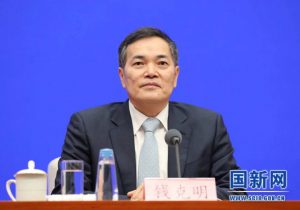
The number of industrial parks and economic and trade cooperation zones built by Chinese enterprises in Africa is increasing and their business scope is increasingly diversified, qian Keming, vice Minister of Commerce, said at the press conference of the 8th Ministerial Conference of the Forum on China-Africa Cooperation held by the State Information Office on November 17. Covering resource utilization, trade and logistics, light industry building materials, textile and clothing, machinery manufacturing, household appliances, agricultural production and other fields.
Qian said various development zones in China play a very important role in reform and opening up, attracting foreign investment and developing industries. On the other hand, in terms of African development, the infrastructure development level is relatively backward, and it is relatively concentrated in one place to carry out “several access and several leveling”. In terms of preferential policies, some preferential policies are also given to the park, which is conducive to attracting investment. In terms of “going global”, 70% of Chinese enterprises are small and medium-sized enterprises, which are relatively weak in terms of investment ability, negotiation ability and international operation ability. Concentrate in one park and create a better environment for the park through the government. Therefore, The development of Chinese industrial parks in Africa has been relatively fast in recent years.
Ke-ming qian is introduced, some African countries are developed industrial park development planning, and introduced the corresponding regulations and policies, China’s enterprises in the construction of industrial parks and economic and trade cooperation zone number are also growing, and the business scope has become increasingly diverse, covering the resource utilization, trade logistics, light industry, building materials, textile and garment, machinery manufacturing, household appliances, agricultural production and other fields. For example, The Suez Economic and Trade Cooperation Zone in Egypt has formed a layout of five industries: petroleum equipment, high and low voltage electrical appliances, textile and clothing, new building materials, and machinery manufacturing. Meanwhile, it also drives the settlement of upstream and downstream industries, forming an industrial agglomeration effect. For example, The Eastern Industrial Park in Ethiopia introduced the concept of Chinese industrial park development and operation, providing customs clearance logistics and “one-stop” services, and the enterprises involved in textiles, building materials, automobiles, food processing, medical treatment and so on.
Ke-ming qian said that the next step, with African countries, China will continue to experience sharing, policy coordination and supporting infrastructure, investment management, etc., to support in the business cooperation zone construction, to further strengthen cooperation zone “magnet effect”, as Africa’s “nesting ultra-competitive of industrialization, a new highland china-africa industrial production cooperation.
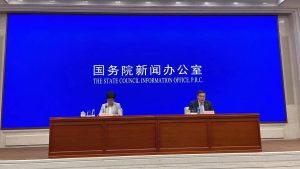
Qian Keming, Vice Minister of Commerce, introduces the economic and trade work of the 8th Ministerial Conference of the Forum on China-Africa Cooperation (FOCAC) at a press conference held by the State Information Office at 10:00 today (November 17).
Qian Keming said that the new measures of this session are mainly based on the following considerations:
First, we need to align our development strategies. The new measures will combine China’s long-term goal of 2035 with a new development pattern featuring “dual circulation”. The purpose of our cooperation with Africa is to align our plans with the AGENDA 2063 of the African Union. The African Union has formulated an Agenda 2063, and there are many specific plans within this framework. We will enhance the synergy of our strategies in this regard and define the development path and specific measures for China-Africa cooperation.
Second, focus on cooperation opportunities. New measures will focus on the epidemic situation in Africa and china-africa cooperation in economic and social development of new opportunities, covering both traditional china-africa cooperation areas, and to support the development of Africa as the main line, focusing on health disease resistance, poverty reduction and trade and investment in areas such as people’s livelihood, expanding African in the digital economy and green low carbon, vocational education and other emerging areas of cooperation. The synergy strategy I just mentioned is a long-term plan. Actually, we have a three-year cooperation plan, which focuses on specific areas of cooperation.
Third, pool strength for cooperation. The new measures will encourage and support more departments, local governments, enterprises and financial institutions, as well as market-based funds such as commercial credit and enterprise investment, to participate in China-Africa cooperation, thus increasing the effective force of China’s cooperation with Africa. In the past, we mainly provided assistance at the central level, including sovereign loans, but now we need to expand to local governments and enterprises, especially private enterprises. In addition, it has expanded from some traditional areas to emerging areas, including low carbon and digital economy, with diversified participation and expansion to emerging areas.
Qian said that during the meeting, China and Africa will jointly release the China-Africa Cooperation Vision 2035, make a medium – and long-term plan for China-Africa cooperation, lay down the main framework for bilateral cooperation in the next 15 years, and further enhance the forward-looking, systematic and continuity of the new measures of the Forum. We believe that with the joint efforts of China and Africa, the new FOCAC meeting will be a grand gathering for China and Africa to achieve win-win cooperation and common development at a higher level.
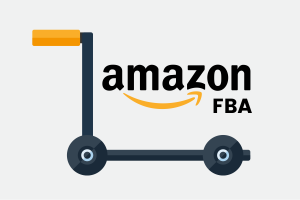
There are several aspects of FBA fees
Storage fees, order handling fees, sorting and packaging fees, weighing and handling fees and other fees that are not commonly used.
FBA fees =FulfillmentFees(implementation fees)+MonthlyStorageFees +InventoryPlacement Service
FulfillmentFees =OrderHandling +Pick&Pack +Weight Handling
Order handling is charged per piece. Order handling fee (standard items) : $1.00/ PCS in the US station, 0.82 pounds/PCS in the UK station, 1.38 euros in Germany, France, Italy and Spain.
The sorting, packing and weighing charges are charged according to the size and weight of the goods.
Other charges are for personalized services such as labeling, shipping, destruction, special packaging, etc.
If you want to open a shop in Amazon Germany, you need to understand the rules of Amazon and the laws and regulations of Germany, otherwise you can’t operate smoothly. German packaging law is a law to reduce the use of packaging and the impact of packaging on the environment. Although it has been nearly two years, there are still many sellers who do not know the rules, or even how to register. It doesn’t matter, today this article will take you in-depth understanding and study the German packaging law.
First of all, let’s understand what is the German packaging law?
German packaging method -Verpackungsgesetz, referred to as VerpackG. It is an upgraded version of the German packaging Regulation Verpackungsverordnung (VerpackV), which came into effect on 1 January 2019. The decree creates a new set of obligations for commercial entities to package goods on the German market. As a supplier of products and goods to the German market, Etisoft has met these requirements and is registered in the Central Packaging Registration System. If you do Europe or Germany station, deep cultivation of Germany, must understand this packaging method, and must go to the registration for the record!
What happens if the German packaging law is not registered?
The packaging law and regulations have come into effect on January 1, 2019. I believe that those who do European stations have received an email notification from Amazon. All sellers are required to comply with the new packaging act, otherwise the products will not be stocked or sold in Germany.
Requirements: as long as your customers are in Germany (that is, anyone staying in Germany will receive your package), any package of your products must be registered and licensed. Otherwise, your product will not be able to sell in Germany, and you will have to pay a fine of up to 200,000 euros!
Why is there this law?
The answer in two words: environmental protection. Germany requires you to register, that is, to let the waste disposal company in your country know whether your packaging can be handled. If they can handle it, they’ll sell it to you; If it cannot be treated, they simply refuse entry.
German packaging law registration process
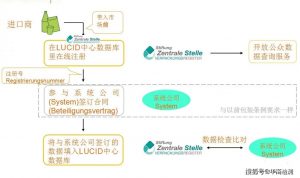
LUCID management system
The law applies to all packaging. Through a central database, better management of manufacturers and waste management systems companies, more transparency, physical and chemical requirements consistent with the old packaging regulations, and minimal packaging as possible. It is recommended to mark the materials according to the packaging materials, such as PET, PVC, PAP, ALU, FE, GL, TEX, lead, cadmium, mercury, and hexavent chromium. The total quantity does not exceed 100 mg/kg
You need to register with LUCID online
To register online in the LUCID Central database:
Importer name, address and contact information (public) Natural person with representative/agent status Manufacturer identification number or EU tax number brand name (public) participating in one or more system company statements submitted information accuracy statement
Fill in the LUCID Central database with the following information:
Registration Number Packaging materials and Weight System Company name Effective period of the contract
Submit to LUCID by March 15 of the following year, subject to expert review before submission
Main contents of VE Statement:
The packaging material and weight actually introduced into the market in the previous year participating in one or more system companies are exempt: glass not exceeding 80 tons, paper not exceeding 50 tons, or other packaging materials not exceeding 30 tons
A fine
Failure to register with LUCID in time can result in a fine of up to 100,000 euros; Failure to participate in systems companies can result in fines of up to 200,000 euros
Note to Amazon Sellers:
All materials and information are provided directly by third party providers. Amazon does not appoint or recommend any third party providers and cannot guarantee the accuracy or completeness of any of its materials. To the fullest extent permitted by applicable law, Amazon and its affiliates disclaim any warranty, express, implied or presumed.
In principle, all typically wasteful packaging by end users must be licensed. This includes transporting materials. The manufacturer or first issuer of packaging material shall be responsible for licensing. “Erstinverkehrbringer is the first person to distribute b2c packaging containing goods to third parties for commercial (and possibly free) purposes for distribution, consumption or use,” the Central Office wrote.
In order to make your products more safely sold in Germany, it is recommended that you register the packaging method as soon as possible!
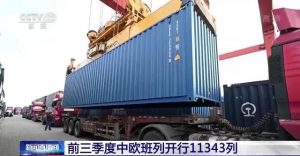
In the first three quarters of this year, China-Europe freight train transportation maintained strong growth, and continued to play a key role in stabilizing the international supply chain and boosting international cooperation against COVID-19, according to China Railway Group. In the first three quarters of this year, a total of 11,343 China-Europe freight trains have run, carrying 1.093 million TEUS of goods, up 29% and 37% respectively year-on-year, with the heavy container rate reaching 97.9%.
Since the beginning of this year, China-Europe express trains have made full use of their unique advantages in international railway combined transport, vigorously carrying goods transferred by sea and air, and the number of trains in operation has remained at a high level. A total of 11,343 trains have been opened, delivering 1.093 million TEUS of goods, up 29% and 37% respectively year-on-year, with the rate of heavy containers reaching 97.9%. In September, 1,291 China-Europe freight trains ran, carrying 127,000 TWENTY-foot equivalent units (TEUs), up 9 percent and 16 percent year-on-year respectively, continuing to play a key role in stabilizing the international supply chain and boosting international cooperation against COVID-19.
China Railway Urumqi Bureau Group Co., Ltd. has utilized the transport capacity of alashan Pass and Khorgos shorelays within the railway, optimized transport organization, refined safety measures, precise scheduling and command, enhanced the joint mobility of quasi-rail and wide rail, and maximized transport production efficiency.
China Railway Shanghai Group Co., Ltd. planned the operation frequency of china-Europe freight trains in advance, and provided 24-hour loading and unloading service for china-Europe freight trains. By the end of September, nearly 500 china-Europe freight trains (Yiwu) had run this year.
China Railway Jinan Bureau Group Co., Ltd. has actively explored the mode of “freight train + cross-border e-commerce”. The number of China-Europe freight trains in operation this year is close to the total number in operation last year.